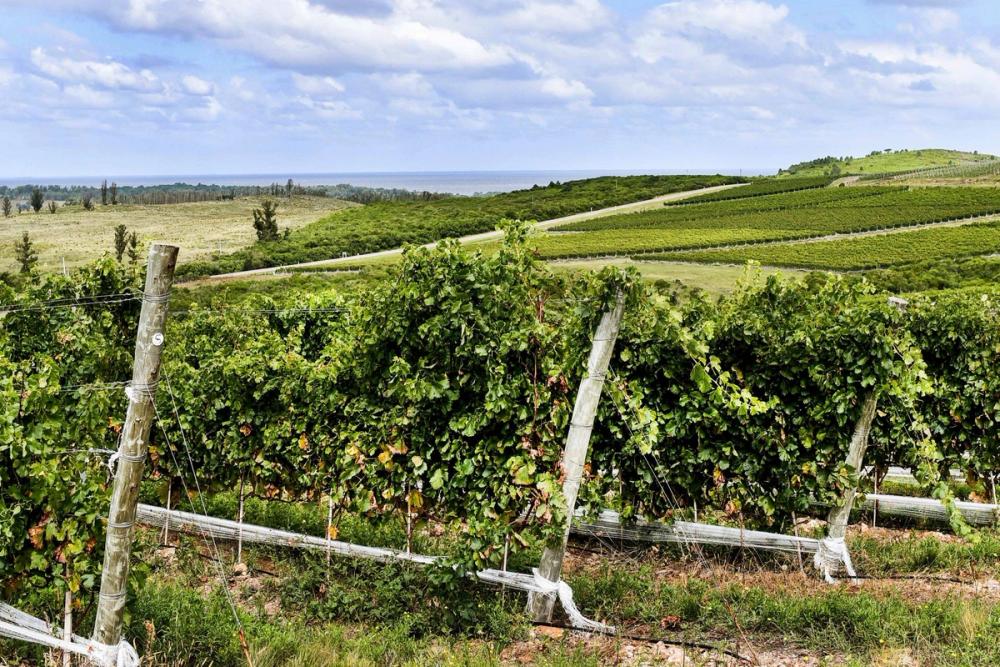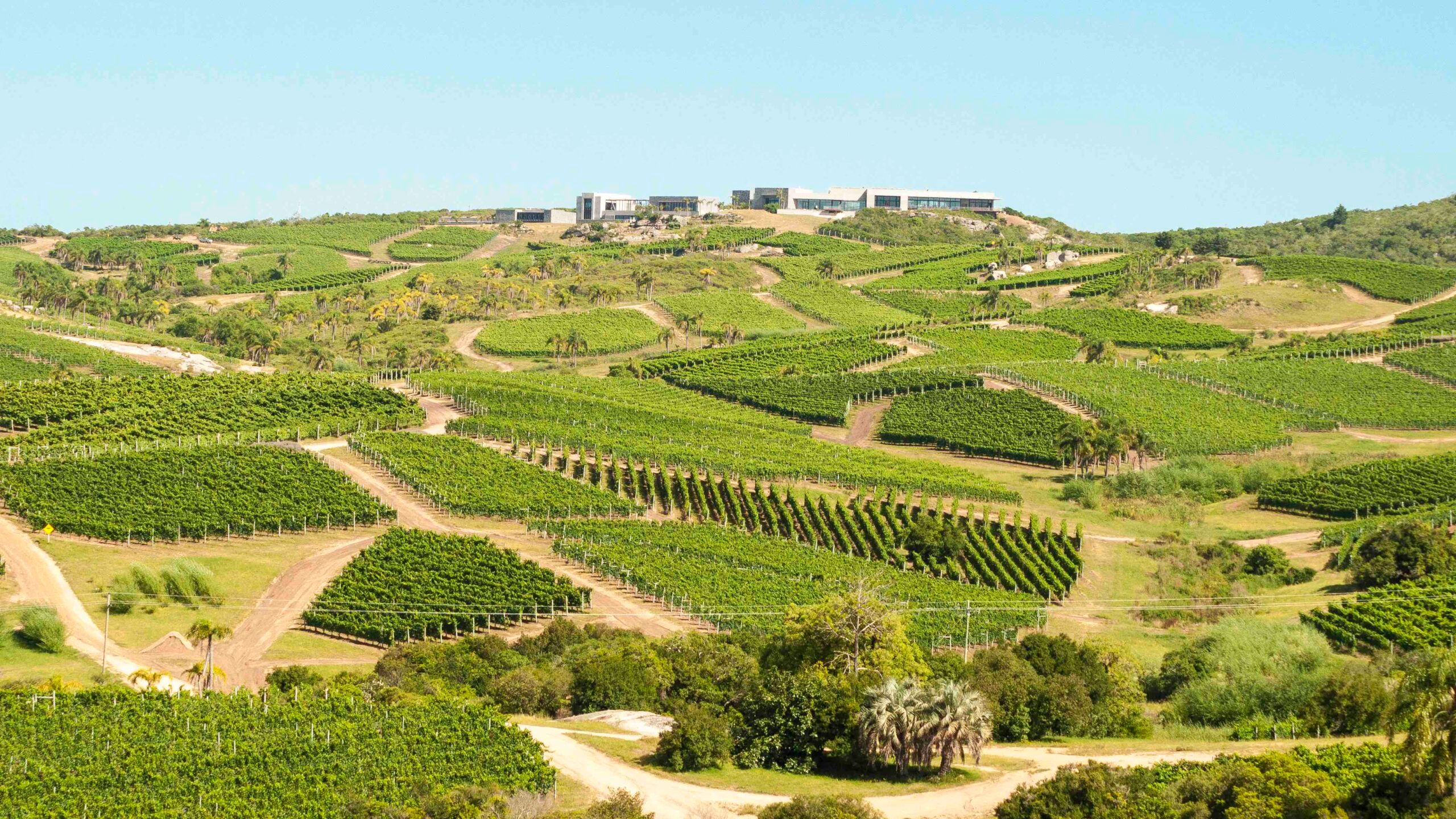“Uruguayan Albariño shares the saline, coastal freshness you expect from Rias Baixas but typically boasts a slightly richer fruit profile.” See for yourself at the Unveiling Uruguay tasting in London on March 6. Click here for more details.
In recent years, Albariño has emerged as Uruguay’s star white wine. Although the South American country’s love affair with this variety is relatively recent, its affinity for Albariño is no coincidence.
When the Bouza family first planted Albariño in Uruguay, in 2001, it was due to their Galician roots that they decided to take a chance on the variety. Uruguay is a country filled families of mainly Spanish and Italian descent, and of those 800-or-so families within the wine industry most have planted grape varieties based on their heritage. Although Uruguay is relatively small as a wine country, with 5,848 hectares planted, it does boast enormous diversity — with over 80 grape varieties in production.
Albariño’s success in Uruguay though, reaches far beyond the family heritage. There’s no doubting that Albariño has a natural affinity for the maritime climate and terroir of Uruguay.

The vineyards at Cerro del Toro whose wines will be at the London Uruguay tasting on March 6
Unlike neighbouring Argentina and nearby Chile, Uruguay’s wine regions are dominated by an Atlantic maritime climate. Its average annual rainfall, at 1,200 mm a year, is not far off the 1,600 mm typical in Rías Baixas. Summers are moderate, and temperatures don’t usually reach over 29C, nor does it get too cold in winter. Uruguay’s highest peak is Cerro Catedral at 514 m.a.s.l., and it is only very rarely dusted in snow. Uruguay is a world apart from the more extreme wine regions of Argentina and Chile.
Its wines are therefore much more modest than many of its New World counterparts. Uruguay is often monikered as ‘a piece of the Old World in the New World’, and its wines reflect that more European character — savoury, framed on acid, and modest in alcohol.
All of this, in combination with the incredible granite soils of eastern Uruguay, has made it a hotspot for top quality Albariño. The variety is now the tenth most-planted in Uruguay with several key producers making and now exporting the variety.
Same but different
Although each estate and family has its own signature style, Uruguayan Albariño shares the saline, coastal freshness you expect from Rias Baixas but typically boasts a slightly richer fruit profile. What Uruguay achieves well are wines of high quality that express both the purity of the Albariño varietal expression with that zippy coastal character.
When Decanter did its ‘Albariño beyond Iberia’ blind tasting last year, it didn’t surprise me the top scorer was Uruguayan.
Five Uruguayan Albariño producers to know

Bodega Bouza can claim to be the first producer to make Albariño in Uruguay
The original Albariño producer of Uruguay, who kicked the whole scene off in the early 2000s. Bouza continues to make one of the most lauded Albariño wines in Uruguay, from their – now relatively mature – original vines in Canelones. With a clay soil profile, Bouza’s Albariño is typically one of the more opulent in aromatic profile and can age very well.
If there’s one Albariño producer you should know, it’s Garzón. This impressive and sweeping estate in Maldonado put Uruguayan Albariño on the international map when it launched its first vintage in 2010 — now reaching more than 50 countries. Always fresh and vibrant, the wines scale up from the good value Reserva to their Petit Clos — which is released scandalously young for its ageing potential.
Santiago Deicas had been experimenting with Albarino for several years before releasing what is now the icon of their coastal white wines — Cru d’Exception Albariño. It was worth the wait, and shows poise and focus within folds of violets, lemon curd and tangerines. Classy.
Just two kilometres from the sea, Cerro del Toro’s Albariño wines reflect their very coastal identity. Racy and zesty, the entry level is good value but the Sobre Lías has the texture to back up the visceral salinity.
Compañía Uruguaya Vinos de Mar
Although a newcomer in Uruguay, Argentina’s Michelini – Mufatto family have been making excellent wines in Mendoza’s Uco Valley for well over a decade and in Bierzo since 2015. Their first vintages from this boutique project in Maldonado are now coming to light, and later this month will be the first international tasting of their mouthwatering Albariño and Pinot Noir wines — I can’t wait.
- There will be 18 wineries attending the Uruguay Wine Trade Tasting on March 6 at Asia House, 63 New Cavendish Street, London W1G 7LP. A masterclass for buyers will be held at 10.30am, and for importers at 2pm. To find out more and to register click here.

































